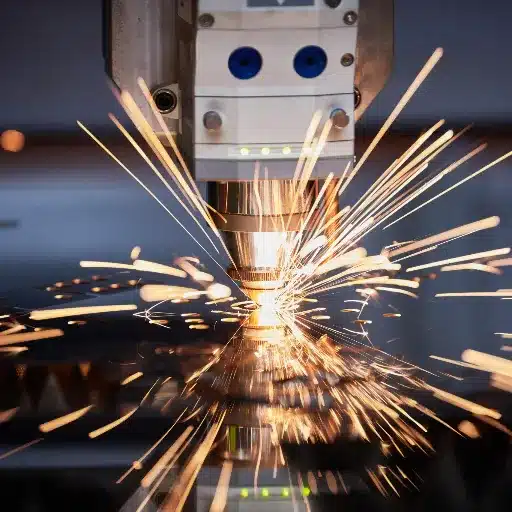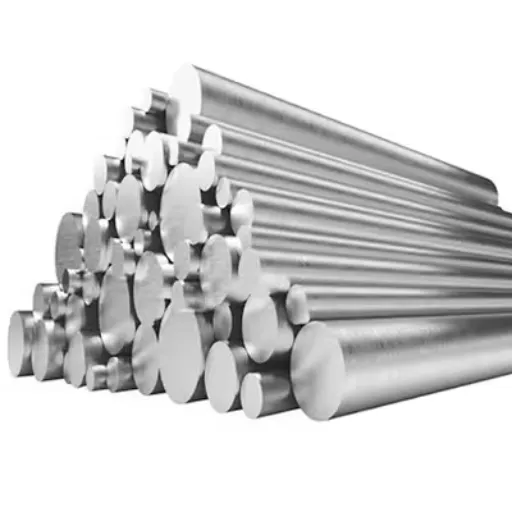The multifaceted nature of AISI 4130 alloy steel makes it an industrial powerhouse and its strength truly sets it apart within the industry. AISI 4130 is often called “chromoly steel” because of its composition, which includes chromium and molybdenum. Given its properties, this low alloy steel is unbelievably versatile because it can withstand rugged conditions. From aerospace components to automotive and power energy, AISI 4130 stands out for its weldability, endurance to rough conditions, and toughness. But what makes this alloy so remarkable and a constant companion for engineers and designers? We will answer these questions in this article by analyzing the properties of AISI 4130 alloy steel, its scope of applications, and its versatility within recent designs. Industry experts and even those interested in engineering bolster their understanding of AISI 4130 alloy steel through this guide.
What is the Chemical Composition of AISI 4130 Steel?
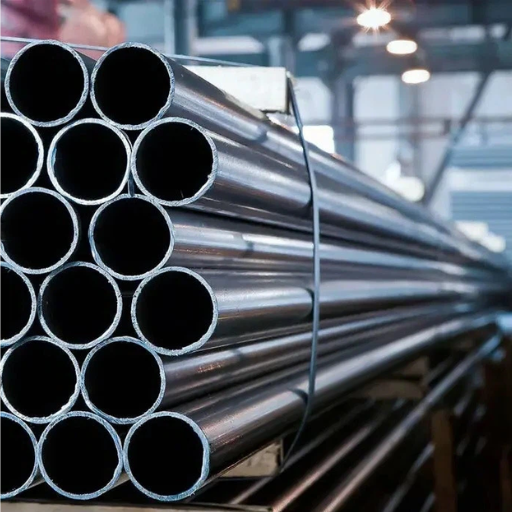
The unique properties of AISI 4130 steel come from its precise blend of elements which includes:
- Chromium (Cr) 0.80% – 1.10%
- Manganese (Mn) 0.40% – 0.60%
- Molybdenum (Mo) 0.15% – 0.25%
- Carbon (C) 0.28% – 0.33%
- Silicon (Si) 0.15% – 0.35%
- Sulfur (S) Max 0.040%
- Phosphorus max (P) 0.035%
This blend of AISI 4130 steel guarantees its strength, durability, and versatility across multiple engineering applications.
Understanding the Chromium and Molybdenum Content
The strength and wear resistance of AISI 4130 steel is remarkably improved by chromium and molybdenum, indispensable elements in the steel’s metallurgy. Chromium has a content of 0.80% – 1.10% in AISI 4130 and increases the hardness and strength of steel while providing good corrosion and oxidation resistance. This is possible since Cr makes an oxide protective layer on the surface of the material which increases the material’s resiliency in harsh environmental conditions. Furthermore, Cr also plays a vital role in increasing tensile strength in the steel.
On the other hand, Mo is essential for increasing the toughness and heat resistance of the steel. In AISI 4130, Mo has a composition of 0.15%-0.25 %. Mo increases the steel’s capability under high-stress and high-temperature situations, which is why it is used in aerospace, automotive, and energy industries. Due to its ability to refine grains, it also reduces brittleness after heat treatments or welding processes. The combination of Cr and Mo in AISI 4130 balances strength, ductility, and longevity, making the alloy suitable for demanding constraining engineering projects.
The combination of these two elements provides superior corrosion resistance and increases the steel’s fatigue strength, allowing him to load cyclically.
These characteristics make AISI 4130 useful for aerospace tubing, pressure vessels, and even structural components.
How Does Carbon Content Affect AISI 4130 Steel?
| Key Aspect | Impact of Carbon Content (0.28%-0.33%) |
|---|---|
| Strength | Increases tensile and yield strength |
| Ductility | Maintains good ductility and malleability |
| Weldability | Excellent due to low carbon content |
| Corrosion Resistance | Moderate, enhanced by chromium content |
| Hardenability | Improves with heat treatment |
| Machinability | Easy to machine in annealed condition |
| Applications | Ideal for aerospace, automotive, and tools |
Role of Strengthening Agents in AISI 4130
| Strengthening Agent | Role in AISI 4130 Steel | Key Benefits |
|---|---|---|
| Chromium (Cr) | Enhances hardness and strength | Improves corrosion resistance |
| Molybdenum (Mo) | Increases creep resistance | Enhances high-temperature performance |
| Carbon (C) | Provides basic strength | Improves hardness and wear resistance |
Exploring the Thermal Properties of 4130 Steel

AISI 4130 steel has great thermal properties, which make it beneficial for places where heat is present. Its thermal conductivity is excellent for heat transfer, and its coefficient of thermal expansion is moderate, ensuring ample range for weather changes. Furthermore, 4130 steel is tough and strong at high temperatures, making it favorable where high temperatures are present, such as in the automotive and aerospace industries. These properties can be altered by controlled heat treatment to enhance tailored performance for the desired application.
How Does Heat Treatment Affect AISI 4130?
Heat treatment is important for altering the properties of AISI 4130 steel to suit multiple applications. The process improves the steel’s microstructure, optimizing its strength, hardness, ductility, and overall performance. Here are five key impacts of heat treatment on AISI 4130 steel.
- Improved Hardness
The quenching and tempering processes increase the hardness of AISI 4130, which enhances its application range. This is particularly important for gear and shaft manufacturing, which require wear-resistant materials.
- Enhanced Tensile Strength
The microstructure of AISI 4130 changes with heating, altering its grain structure. For instance, normalizing AISI 4130 increases its mechanical and tensile strength due to a refined grain structure.
- Better Toughness
Tempering after quenching increases toughness because toughness is directly related to the material’s ability to absorb energy without becoming brittle under stress.
- Refined Microstructure
Ductility is improved by aligning internal stresses and the grains’ direction, which increases the material’s machinability through annealing. This aids manufacturing processes that undergo various altering phases.
- Consistent Performance at Elevated Temperatures
With heat treatment, AISI 4130 can maintain its strength and stability at high temperatures, enabling its application in high-performance fields such as aerospace and energy.
The versatility of AISI 4130 is showcased through its industrial applications, which can be attributed to customizations provided through heat treatment.
Can AISI 4130 Withstand High Temperatures?
| Key Aspect | High-Temperature Performance of AISI 4130 |
|---|---|
| Maximum Operating Temp | Up to 530°C (986°F) |
| Heat Treatment Range | 899-927°C (1650-1700°F) |
| Strength Retention | Maintains strength at elevated temperatures |
| Corrosion Resistance | Enhanced by chromium and molybdenum |
| Applications | Aerospace, automotive, furnace equipment |
The Importance of Annealing in AISI 4130
| Key Aspect | Importance of Annealing in AISI 4130 |
|---|---|
| Relieves Internal Stresses | Reduces residual stresses in the material |
| Improves Ductility | Enhances material formability |
| Refines Grain Structure | Produces uniform and fine grain structure |
| Reduces Brittleness | Lowers hardness for better machinability |
| Enhances Toughness | Improves resistance to fracture |
Common Applications of AISI 4130 Alloy Steel
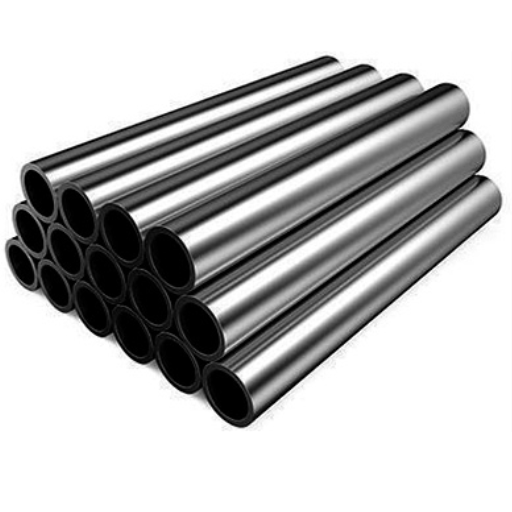
Due to its lightweight, strength, and durability, Aisi 4130 alloy steel can be found in many different industries. Here are some of its applications:
- Aerospace: Used in components like pedestal mounts, foldable fuel tanks, compressors, landing gear, and other structural components where a high strength-to-weight ratio is crucial.
- Oil and Gas: Used in pipelines, drilling rigs, and wellhead components where toughness and corrosion resistance matters.
- Automotive and Motorsports : Widely used in roll cages, chassis, and other parts required to be lightweight while enduring high stress levels.
- Construction: AISI 4130 is highly regarded for its remarkable strength and reliable structure when designing cranes, bridges, and infrastructure.
- Manufacturing Tools: Steel like this is frequently used to manufacture heavy-duty tools and stress-resistant dies.
Such advanced materials of engineers put together in the construction industry requires precision and strength, which AISI 4130 greatly offers. Due to versatility, engineers can depend on it in multiple sectors.
Why is AISI 4130 Used in Aerospace and Aircraft?
| Key Aspect | Reason for Use in Aerospace |
|---|---|
| Strength-to-Weight Ratio | High strength with reduced material weight |
| Corrosion Resistance | Chromium content offers moderate resistance |
| Weldability | Excellent for complex aerospace structures |
| Toughness | Retains toughness under stress and impact |
| Heat Resistance | Performs well under elevated temperatures |
| Fabrication Ease | Easily machined and formed |
| Applications | Fuselages, safety cages, and landing gears |
Utilization in the Automotive Industry
Because of its favorable strength-to-weight ratio and extreme condition weldability, AISI 4130 is widely used for automotive roll cages, chassis, and suspension parts.
Structural and Engine Mount Applications
With unmatched strength and fatigue resistance, AISI 4130 is preferred by many for parts of aircraft structure and engine mounting. My preference falls to it because of its light weight and ability to endure high stress and harsh environments which is critical for safety and performance.
How Does Heat Treatment Influence AISI 4130’s Properties?
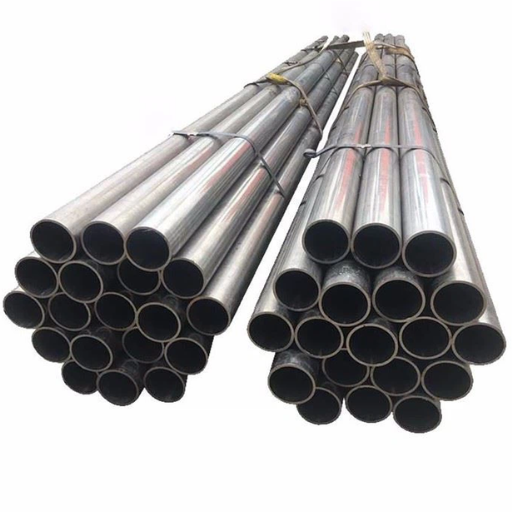
The heat treatment processes change the microstructure of the materials’ properties of AISI 4130; its alloys’ hardness, strength, and toughness can be modified to suit various applications using processes like quenching, tempering, annealing, as well as normalizing. An instance of this is AISI 4130, which undergoes quenching to increase its hardness, strength, and tempering, which makes the material less brittle and restores ductility. These processes increase the ability of AISI 4130 to withstand harsh environments while maintaining its durability.
Exploring the Hardening Process in Detail
The hardening procedure for AISI 4130 steel is performed by either increasing the heating of the alloy to achieve the austenitizing temperature of 1500°F, or 1600°F (815°C to 870°C), depending on the application. During the heating phase, the microstructure of the steel transforms into austenite, and tempering is also a critical process for obtaining the required hardness in the following steps. Steel is normally soaked at 982 °C (1800 °F) for 1 hour and then quenched to oil or water. The rapid cooling of quenching results in trapping carbon atoms in the lattice structure, forming a hard phase called martensite. Currently, the structure obtains extreme strength but in a brittle state.
Owing to the risks associated with stress fractures, AISI 4130 is tempered immediately after quenching due to martensite formation tempering. The process of tempering steel consists of reheating it to any temperature within the range of 400°F-1,100°F (200°C-600°C) and then holding it at that temperature for a given time. This step balances internal stress, toughness, strength, and ductility.
New research suggests that for AISI 4130, tempering at around 900°F (482°C) provides the best mechanical properties combination and results in fracture toughness of around 97,000 psi. Additionally, the hardness level reached by utilizing the hardening technique is estimated to be 23 to 35 HRC on the Rockwell Hardness scale (depending on the precision of quenching and tempering conditions).
The development of the hardening process also includes the use of vacuum heat treatment systems, which provide uniform heating and cooling to reduce oxidation, thus greatly enhancing material quality. Due to these developments, AISI 4130 becomes more versatile for other industries like aerospace, automotive, and energy, where concern for precise mechanical reliability and strength is crucial.
Effects of Tempering on Mechanical Properties
The alloy’s mechanical properties can be altered by the tempering process, making AISI 4130 a more desirable material for certain applications. The material can be modified by changing the tempering temperature and duration, resulting in some of the most sought-after characteristics. Below are 5 major impacts of tempering on the mechanical properties of AISI 4130.
- Increased Toughness
Moderate temperature tempering increases toughness by reducing the brittleness of AISI 4130 while improving toughness due to stress relief.
- Enhanced Ductility
Ductility makes AISI 4130 more deformable when tensile forces are applied. This is enhanced by an increase in tempering temperature.
- Hardness Decrease
When AISI 4130 undergoes tempering, its hardness slightly decreases, which helps to maintain the hardness-to-toughness ratio in balance.
- Impact Toughness Improvement
Significantly improves dynamic tension impact toughness on AISI 4130. This is important for the sustained use of AISI 4130 in more dynamic loading applications.
- Microstructure Preservation
With tempering, microstructure stabilization of AISI 4130 is achieved, making it less prone to distortion during service.
The precision of these changes allows AISI 4130 to perform best in harsh industrial conditions.
Importance of Annealing for Machinability
Annealing makes AISI 4130 more workable and easier to machine. It enhances the stainless steel’s cuttability, shapeability, and machinability by reducing internal stress and softening the metal, limiting the ease of reshaping it. This creates the additional benefit of an increased lifespan of the machinery while allowing for the precision needed to meet the exact dimensional requirements. From my experience, AISI 4130 and its alloys are subject to less damage due to tools and their wear and tear, which is greatly beneficial during machining, particularly multi-tool machining, that involves intricate structures.
What Makes AISI 4130 Steel Material Unique?
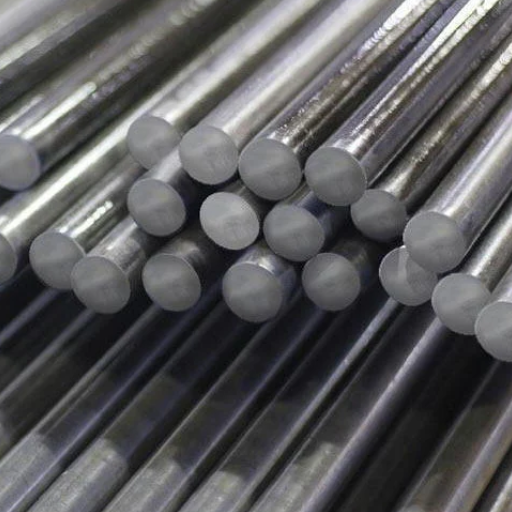
The AISI 4130 steel is a low alloy with molybdenum and chromium, which contribute to this alloy’s wear and erosion resistance. Furthermore, AISI 4130 is suitable for manufacturing and has unmatched toughness, strength, versatility, and a high strength-to-weight ratio. This type of steel is preferred for use in the automotive and aerospace construction industries. Other than those, AISI 4130 is weldable and machinable, which means it can be constructed and bonded using various methods without losing the structural integrity of the alloy, making it reliable not just for complex and exposed structures but for high-demand performance structures too.
Comparisons to Similar Steels Like 4140
| Key Aspect | AISI 4130 | AISI 4140 |
|---|---|---|
| Carbon Content | 0.28%-0.33% | 0.38%-0.43% |
| Strength | Moderate | Higher |
| Toughness | Better | Slightly lower |
| Weldability | Excellent | Requires pre/post-heat treatment |
| Machinability | Easier | Slightly harder |
| Applications | Aerospace, bicycles, roll cages | Gears, shafts, heavy machinery |
| Cost | Slightly less expensive | Slightly more expensive |
Understanding AISI 4130’s Weldability
AISI 4130 is known to have excellent weldability; therefore, it is used in industries involving solid joint performance materials. Solid welded joints of machine materials are critical to avoid machine failures. Using chops and saws or other mechanical processes on this type of steel requires intensive use of separating techniques AISI 4130 alloys low carbon value of around 0.28% to 0.33% makes him resistant cracking due to welding pre heating and post weld therma treatments accompanied by chamotronic level grinding enables good results while trimming and edge finishing.
When welding AISI 4130, preheating is done between 300 and 600°F, depending on the thickness of the material. The AISC 4130 grade steel components are subjected to weld heat treatments to relieve reinforcing pre-stress. Post-weld joint therapy is around 1100 to 1300 °F, which helps to eliminate stress while enhancing the durability of the material.
TIG and MIG techniques are among the most common for welding AISI 4130. Having a parent material of ER70S-2 makes it possible for the joint to endure vigorous strain and deform better than other available materials. With the use of proper solder, TIG provides high precision that aids in critical operations in aircraft.
It is essential to achieve cleanliness of the surface to be welded by removing oil, rust, or any contaminants that could affect the quality of the weld. Additionally, after welding, controlled cooling is preferred to prevent rapid quenching, which can harden the steel, resulting in brittleness.
Research studies and practical use of these parameters show that AISI 4130 welds are remarkably effective for procured stress scenarios, retaining strength and flexibility if these steps are incorporated. AISI 4130’s reliable mechanical properties and excellent weldability achieve versatility for its use in demanding applications.
What are the Machinability Characteristics?
The moderate scope of machining AISI 4130 has made it a favorite for components that require precision engineering. A machinability breakdown of AISI 4130 is given below:
- Ease of Cutting Tools Usage
AISI 4130 can be machined using either high-speed steel (HSS) or carbide tools. However, carbide tools are more frequently used due to their efficiency and enhanced durability.
- Machinability Rating
Compared to B1112 steel, which is the baseline (100%), AISI 4130 stands at roughly 70%; thus, AISI 4130 is usually reliable during most working processes.
- Chip Formation
The material generates short, simple chips that keep the operations cleaner and minimize the chances of getting entangled in high-speed machining.
- Surface Finish Quality
After AISI 4130 machining, the surface finish is still smooth and precise, thus increasing the quality of the finished components.
- Adaptability to Heat Treatment
When in an annealed state, AISI 4130 becomes easier to machine, and the mechanical properties can be changed and enhanced after machining due to the following adaptable heat treatment.
With appropriate settings, such as optimal cutting speeds and adequate feed rates, AISI 4130 can be counted on to perform well across many applications consistently.
References
- Texture development during austempering process of an AISI 4130 steel
ScienceDirect - An analysis of the mechanical behavior of AISI 4130 steel after TIG and laser welding process
ScienceDirect - Effect of heat treatment of preform on the mechanical properties of flow formed AISI 4130 Steel Tubes—a theoretical and experimental assessment
ScienceDirect
Frequently Asked Questions (FAQ)
Q: What are the key characteristics of AISI 4130 Alloy Steel?
A: AISI 4130 Alloy Steel, also known as UNS G41300, is a low-alloy steel that contains chromium and molybdenum as strengthening agents. It is known for its good strength, toughness, and weldability, with medium carbon content that allows for versatile applications. The alloy is also referred to as chromium-molybdenum steel.
Q: What are the typical applications of AISI 4130 Alloy Steel?
A: AISI 4130 Alloy Steel is commonly used in aircraft engine mounts, gears, and other structural components. Due to its strength and toughness, it is favored in the aviation and automotive industries. The steel is also used to construct machinery and tooling where good strength and weldability are required.
Q: How is AISI 4130 Alloy Steel typically supplied?
A: AISI 4130 Alloy Steel is commonly supplied as a round bar, which is ideal for forging and machining processes. It is often provided in the hardened or annealed condition, depending on the specific requirements of the application.
Q: What are the benefits of using AISI 4130 Alloy Steel over other carbon steels?
A: Compared to other carbon steels, AISI 4130 offers superior strength and toughness due to its low alloy composition with chromium and molybdenum. It also has better weldability, making it a preferred choice for high-performing and reliable applications.
Q: What is the typical hardness of AISI 4130 Alloy Steel?
A: The typical hardness of AISI 4130 Alloy Steel can vary depending on its treatment. In its annealed state, the hardness ranges between 18-22 HRC, while in the hardened state, it can achieve higher hardness levels, making it suitable for demanding applications.
Q: How does the annealing of 4130 steel affect its properties?
A: Annealing AISI 4130 Alloy Steel softens the material, enhancing its machinability and relieving internal stresses. This process improves its ductility and toughness, making the alloy easier to forge and shape for specific applications.
Q: What standards and specifications apply to AISI 4130 Alloy Steel?
A: AISI 4130 Alloy Steel conforms to various standards, including ASTM specifications, SAE, and UNS G41300. These standards ensure the alloy meets specific mechanical and chemical requirements for consistent application performance.
Q: How does AISI 4130 compare to alloys similar to 4140?
A: AISI 4130 is similar to 4140 but contains lower carbon and higher chromium and molybdenum content, providing better weldability and toughness. While both are used in similar applications, 4140 offers higher strength levels due to its higher carbon content.
Q: What considerations should be made when machining AISI 4130 Alloy Steel?
A: When machining AISI 4130 Alloy Steel, it is essential to account for its hardness and toughness. Appropriate cutting tools and speeds are crucial to achieve the desired finish and precision. The steel’s properties allow it to be machined into complex shapes with good dimensional accuracy.
Q: Who are the typical suppliers of AISI 4130 Alloy Steel?
A: Suppliers of AISI 4130 Alloy Steel include specialized metal distributors and manufacturers who provide technical data and support for its applications. These suppliers often offer the alloy in various forms, such as round bars and sheets, to meet diverse industrial needs.


